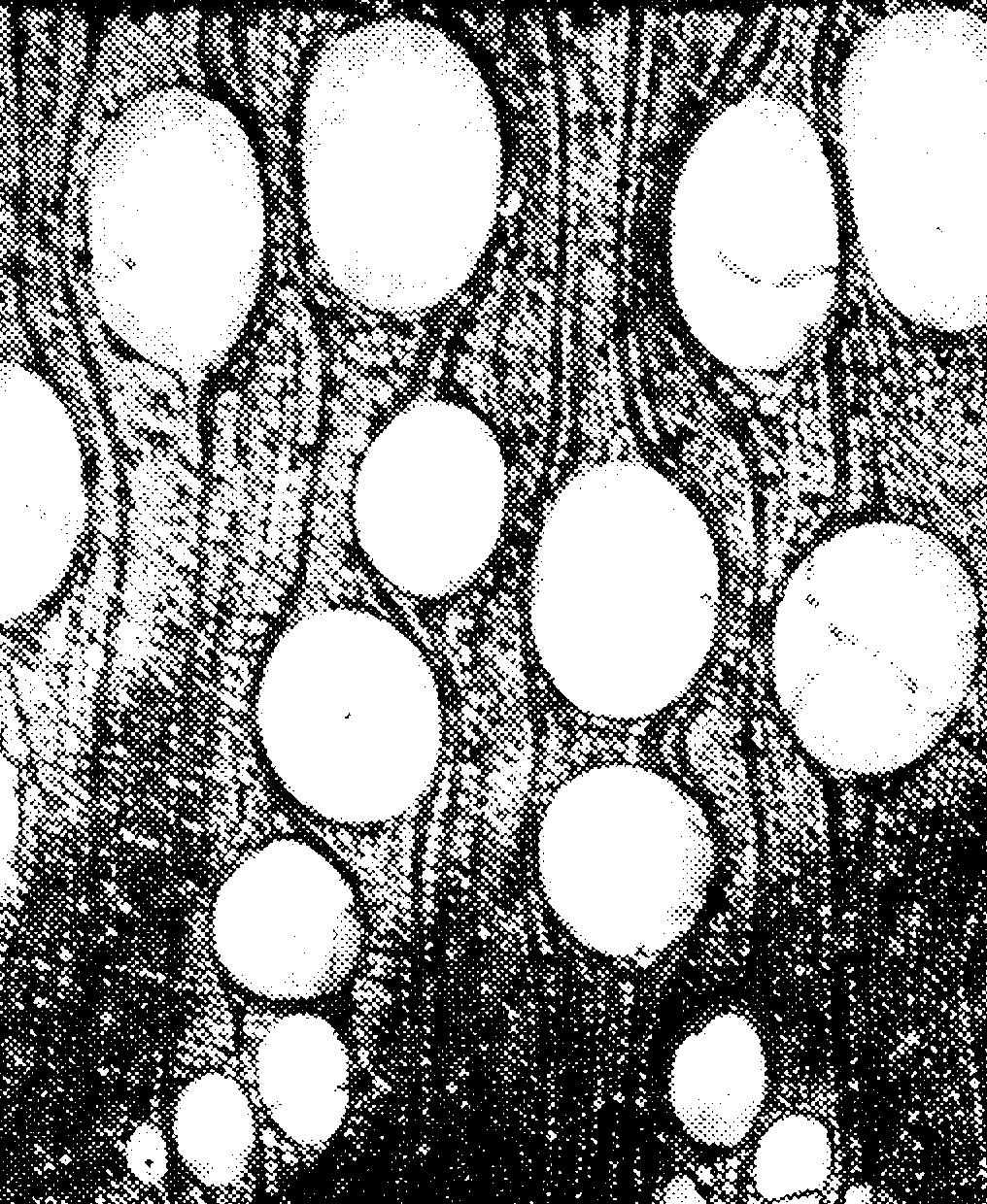Wood
Wood is
a material much taken for granted and little understood, yet so useful
in our everyday life. Wood is a fantasticly complex material that
is not only polymeric but a composite of a complexity that current synthetic
methods can only dream to parallel. Wood primarily consists of a
polysaccharide called cellulose
and other biopolymers such as lignin and other living tissues such as tracheids
and parenchyma cells that act to keep the tissue living.
There
are several different diagnostic features of wood in relation to their
commercial value, among these are porosity, early or late wood, growth
rings, rays, sapwood or heartwood and grain and figure. There are
many distinct morphologies with regard to porosity in wood when seen in
cross section.

Here
is an example of ring porous wood in which pores are arranged in concentric
circles.

Another
pore morphology is pictured here that is referred to as a nonporous wood,
due to the lack of pores

and
yet another form of porosity can be seen in the diffuse porous wood in
which pore sizes and positions are random
Early
wood or late wood refers to growth seasons where early wood is the first
wood formed in the spring and is different in morphology due to the need
for more conductive tissues and late wood is the denser type of wood laid
down with thicher walled cells. In the following image the dark wvy
lines are early wood and the light areas are late wood of white ash.

ash
cross section where the light regions are late wood and the dark regions
are early wood.
Rays are
morphologies arising from sheets or ribbons consisting mainly of parenchyma
cells oriented at right angles to the axis of the stem
Sapwood
and heartwood are differentiated by the fact that the sapwood is the living
tissue and the heart wood is the biologically inactive wood.
Grain
and figure refer to the structural arrangement of various wood elements
and the design or pattern that appears on the surface respectively.
All of these defining charachteristics of wood are either characteristic
of or the cause of different structural properties of wood..
These
different properties include the crushing strength, tensile strength, shearing
strength cross-breaking strength, stiffness, toughness, hardness, and cleavability.
These
terms refer to the structural integrity of the wood with respect to different
forces applied and there exist standard charachterization methods to evaluate
wood and wood containing materials.
The different structural
properties of the wood are determined by such factors as density, moisture
content, and defects. To learn more about physical testing of wood
or wood like materials click here.
Due to
the good structural properties of wood it has been and is used as a common
building material In light of the structural properties and all the
contributing morphologies and external factors wood is a vary versatile
material. Consequently wood has either been improved with various
chemical treatment or reinforcement or utilized in composite formation
in which properties of another bulk material has been attempted to be improved.
Also due to the unique chemical nature of wood components a variety of
other composite applications have been developed..
To learn more click on the
following
Return to
main page



